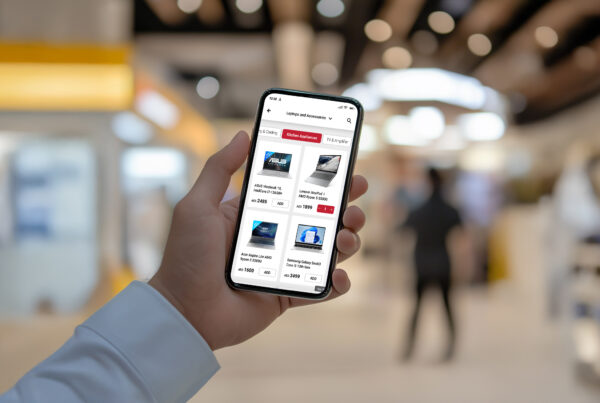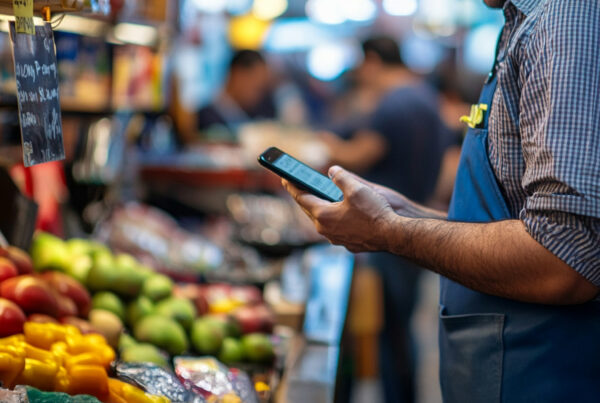If you’re looking to run a food business without the pressure of customer interaction while cutting down on rent and equipment costs – and leveraging the benefits of e-commerce, the cloud kitchen is your go-to concept! Setting up a successful cloud kitchen business is however intricate and will require you to be well prepared, so here are 10 things you need to keep in mind when getting started.
1- Know your customers
Picking and understand your customer category is key to creating your cloud kitchen business. Knowing who you would like to target and what they like to eat will help you build a concept. Do you want to target fast food lovers? Or do you want to target the health-conscious and gym fanatics? This will decide whether you will be making curly fries or cauliflower crust pizzas! Picking a category will enable you to create the right menu – and tailored marketing tactics – so make sure you’ve researched your customers thoroughly.
2- Establish your positioning
Knowing what your competition is selling will help you know who you want to be in the market. What they are serving, what is in demand, and what isn’t – will be lead you not only to put together the right menu, but also to build a unique concept around it. It is no use creating a dish that already isn’t selling elsewhere. Find a dish that actually is selling – then create it with a twist. Having your own touch to an already successful item will not only make you stand out but will also increase and retain your customer base. If those gluten-free muffins are in demand, can you make them in different flavors or add a sugar-free icing on top? It is all about differentiation – after all, why would customers choose you?
3- Select your dishes
- 10 items on your menu are more than enough. Too many items would require a higher budget for more ingredients, which – in case of low demand – would go to waste.
- Having too many items on your menu could lead to ‘decision paralysis’ where customers are overwhelmed with the number of choices and end up not buying anything from you.
- Choose dishes that can sustain delivery time – unlike fries, that become soggy by the time they’ve reached the customer. This would tarnish your brand name and cause customers not to repeat orders.
- Items that are low in margin should be cut out. If they take too long to prepare – they will not be profitable as it is all about volume. Low production time items make more sense, without – of course – compromising on quality!
- Pay attention to packaging. Cheap paper packaging for instance, might cause food to leak during delivery, making a mess and creating an unpleasant experience – causing you to lose a potential repeat customer.
4- Plan your budget
Research the prices of cloud kitchens in your own city to find out about the costs, terms, equipment involved – and even the fees of a consultant that can give you a proper overview on how to set a budget for the type of kitchen that would suit your concept.
5- Find the perfect kitchen
Leverage the fact that you do not physically receive customers and find a kitchen in a non-prime location to cut costs. Warehouse locations for example have lower rents. Since your customers always come first, they should be your compass in finding the best location. Your kitchen should thus be accessible to your customers so food can reach them in a timely manner. Your location should also be accessible to your riders. The harder it is for your fleet to get to your kitchen the less likely riders are going to want to work with you – making it harder for your business to succeed.
6- Choose a good platform
Work with the type of platforms that suit you best – as there are pros and cons to each. While third party food delivery apps will charge a percentage, and do not share data with you – they will still provide you with exposure and a decent number of deliveries – and again, it’s all about volume. On the other hand, having your own platform will enable you to have access to your data, which enables you to retarget customers. You will however need to create your own website or app, setup your own delivery system – and experience less volume, particularly in the beginning. Integrating an order and delivery management system, however, is crucial not just to your delivery process, but to your business overall. Instead of manually taking orders and assigning them to riders, the system will do so automatically by finding the nearest available rider and providing them with the fastest route with GPS. It will also give you a wealth of information such as who and where your customers are, when and what they like to order – giving you the change to retarget them and optimize your menu (and maybe even your kitchen location) according to what works.
7- Decide on your setup
Different cloud kitchens have different set ups and come with different fees. You will need to choose a kitchen according to both your budget and the type of food you make. If your menu mostly consists of baked goods, a conventional oven would be necessary – but if you make tacos, you will need frying pans. While some kitchens will allow you to bring your own equipment, others won’t – so make sure you have thoroughly discussed all equipment related matters with the owner before deciding on one.
8- Get your license
Establishing a restaurant within a cloud-based kitchen would mean that the facility was already approved by the health authority, you should however still have your own business license. In the UAE, starting a cloud kitchen business would require a Trade license and Food license – so make you sure you have all permits and licenses ready.
9- Hire the right people
While you do not need customer facing staff, you will need a team that can withstand the pressure of high-volume orders to be delivered in sometimes as little as 20 minutes. Your cooks, operations manager, and fleet (if you run your own) will need to operate with a sense of urgency.
10- Plan your launch
It is important to have all your platforms aligned. Focus on taking appealing photos of your meals and regularly creating engaging content. You may not have a large (or any) marketing budget at first, but you can still offer value through promotions, discounts, and new meals announcements. Experiment with different marketing channels and tactics until you find what generates orders for your own kitchen.
Lyve nGage is highly configurable and easy to use delivery management software, designed to help you streamline and optimize the final mile. Its flexibility, variety of configurations and advanced algorithm empowers business to enhance operations while cutting costs.
Click here to learn about Lyve nGage features or request a free demo to find out how nGage can help you optimize operations and increase speed of service and drivers’ utilization rate.



